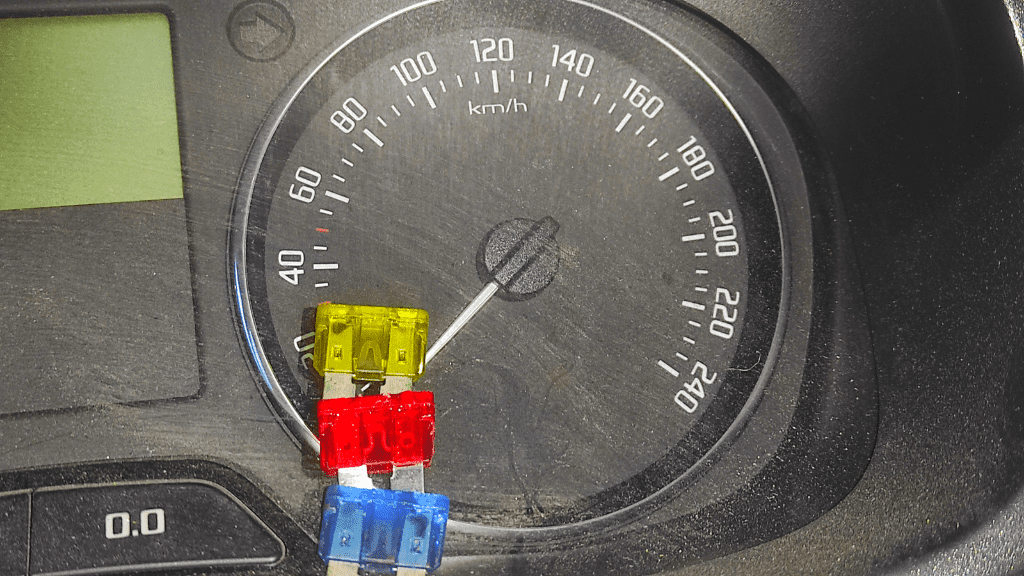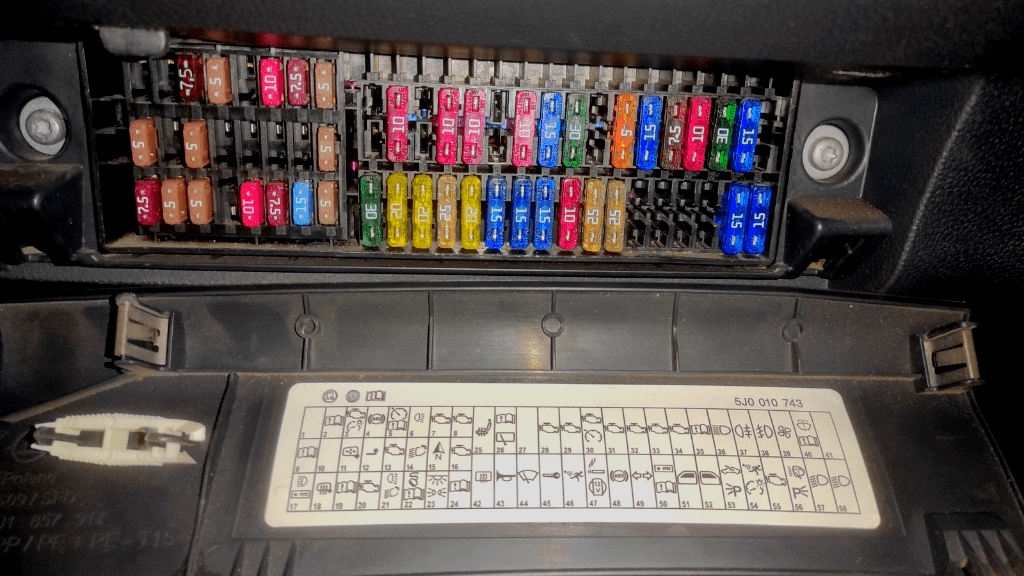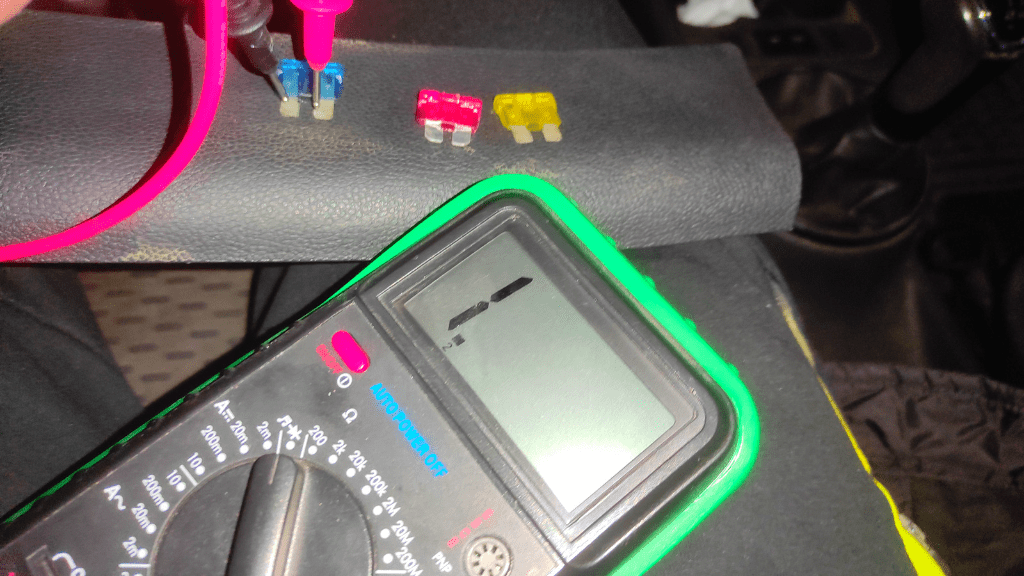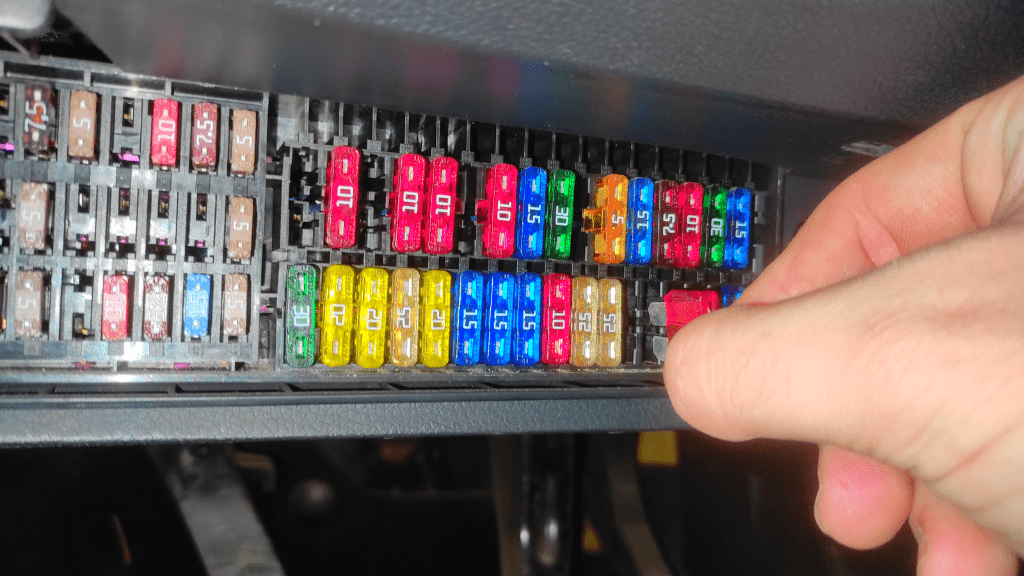What Fuse Controls the Speedometer
Has your speedometer failed to work? Do you suspect the gauge’s fuse is the source of the problem?
If you don’t know what fuse controls your vehicle’s speedometer, you don’t have to worry.
In this guide, we will discuss everything you need to know about the speedometer fuse.
We’ll explain what fuse controls the gauge, where to find it, and the steps you need to take if it stops working.
Let’s get right into it.

What Fuse Controls the Speedometer
The speedometer uses the same fuse as the odometer because they work hand-in-hand, and it is located in your vehicle’s fuse box. Your fuse box contains multiple fuses, so to know the exact fuse for your speedometer and odometer, it is best you view or refer to your car manual.

There are typically two fuse boxes located in your car; one under your engine hood and another beneath your dash (or behind a panel near the driver’s side door).
For instruments in your vehicle, the box beneath your dash or near the driver’s door should be your main focus.
The exact fuse used by the speedometer is the instrument panel fuse.
The instrument panel is the cluster of gauges on the driver’s side of the vehicle, and these gauges additionally include the odometer, tachometer, oil pressure gauge, and fuel gauge, among others.
Although these instrument cluster fuses are commonly found anywhere along the left side of the fuse box, as said earlier, it is better to view or refer to your vehicle manual to be precisely sure.
The fuse simply protects your car’s instruments from overcurrent.
The speedometer and odometer, among other gauges, use the same amount of voltage and current ratings to function properly.
Since there will not be complications, both are assigned the same fuse to save space in the fuse box.
When excess current is sent to or drawn by the gauge meters, the fuse burns out and totally cuts out power to them.
This means that, since the speedometer and odometer use the same fuse, when both stop working at the same time, you have an idea that the fuse may have blown out or gone bad.
Testing Your Speedometer Fuse
Once you check your car manual and locate the exact fuse that controls the speedometer, odometer, or instrument cluster, the first thing you do is diagnose it to see if it is still working.
This gives you an idea of whether the fuse is the problem before spending money on purchasing another fuse to replace it.
This diagnosis involves both visual inspections and testing the fuse with a multimeter device.
- Visual Inspection
With the visual inspection, you try to check if the fuse link has broken. The link is the metal that connects both blades of the car fuse.
Since car fuses typically have some level of transparency, you can try to look through the plastic body to identify any break in the link.
If the case looks foggy or has dark stains, then the fuse may have blown.
Also, if the case is not transparent, dark spots on its outer parts indicate that the fuse has blown and needs to be changed.

- Diagnosis With Multimeter
Regardless of all this visual inspection, however, the best way of determining if a fuse is working or not is to use a multimeter to test its continuity.
You set the multimeter to continuity or resistance mode, place the multimeter probes on both blade ends, then wait for a beep.
If you don’t hear a beep or the multimeter displays “O.L”, the fuse has blown and needs to be replaced.

Replacing Speedometer Fuse
Once you have determined that the fuse is the major cause of your issue, you simply replace it with a new one and see if all the gauges at the cluster function properly.

Be cautious while making this replacement, however. The current and voltage rating of the fuse is specifically tied to the gauge’s rating.
Here, we mean if you use a replacement that isn’t compatible with your gauge’s current and voltage ratings, it doesn’t perform its function and may cause the gauge itself to get damaged.
When you want to buy a replacement, you then make sure that this replacement has the same current and voltage rating as the old fuse.
This way, you are assured that you have installed the right replacement to protect your gauges at the cluster.
Now, what if your diagnosis indicates that the old fuse is still in good condition or the gauge still doesn’t work after installing the new fuse?
Diagnosis If Speedometer Fuse Is In Good Condition
If the fuse is in good condition, you typically have two scenarios; you may have only the speedometer failing to work properly or the entire cluster not working.
In the case that only your gauge fails to work, your problem is usually with the transmission speed sensor or from the cluster.
Problem Originating From Transmission Speed Sensor
Also called the vehicle speed sensor (VSS), the transmission speed sensor is located on the bell housing and transmits an analog electrical signal to the speedometer through the cluster.
This signal is sent through a tiny button that connects to the rear differential using a plug having two or three wires.
The VSS doesn’t only communicate with the gauges through the cluster, however. In performing its function, it also sends signals to the powertrain control module which controls the transmission or gearbox shift points.
This means that if alongside a malfunctioning gauge, you are also having problems while shifting between different gear levels, your VSS is probably the cause of your problem.
One thing you can do is check the VSS cables to see if there is any break in the wiring.
If there is a problem with the wiring, you can replace the wires and see if the unit works.
Ensure that you change the VSS wiring at any point you see damage in a cable as this may cause the fuse to stop working in the future due to a short or grounding problem.
Sadly, if your VSS itself develops an issue, the only solution is to replace it completely.
Problem Originating From Instrument Cluster
Another reason for your gauge not working is if the cluster has issues. At this point, you know your fuse and VSS are okay and the cluster is your next point of reference.
The signals transmitted by the VSS go to the cluster before heading to the gauge. If the VSS and cables are in good condition, the cluster probably has a problem.
Some symptoms you may use to diagnose if the instrument cluster is the cause of your issue with the gauge include:
- Lights of other gauges dimming
- Gauges flickering
- Inaccurate or unreliable readings on the speedometer and other gauges
- All gauges drop to zero while you are driving
- The check engine light coming on occasionally or permanently
If you have some or all of these problems, you may need to repair the instrument cluster.
Sometimes this repair may be at the cluster wiring or involve just cleaning debris off the device.
You may, however, be forced to replace the instrument cluster. This should be your last resort as this could be expensive, going up to even $500 or more for some vehicles.
Problems From The PCM
Remember that the VSS also works with the powertrain control module (PCM) to fulfill its function with gearbox shifts.
The PCM serves as the hub of the vehicle’s electronic activities and the computing brain of the car.
When this PCM doesn’t work properly, you expect your vehicle’s electronic components to perform poorly, including your speedometer, instrument cluster, and VSS, among others. Some major symptoms of a bad PCM include:
- The engine warning lights illuminating,
- Engine misfiring,
- Weak tire controls, and
- Difficulties starting the vehicle, among others.
When you have these symptoms accompanying your gauges malfunctioning, then you have an idea that your PCM could be the issue.
Thankfully, we have a full guide on testing a PCM part with a multimeter so that you can verify if it is the source or not.
You may need to replace your PCM wires or the entire PCM to solve the problem.
Can the Speedometer Work Even if the Fuse Is Blown?
For some cars, a blown fuse won’t stop the speedometer from working. This is seen in very old vehicles where the entire system is mechanical.
Here, the meter is directly connected to a wheel or the gearbox output through a rotating mechanical wire.
Can a Fuse Cause a Speedometer Not to Work?
Yes, a blown fuse can cause a speedometer to stop working. The speedometer fuse is located in the fuse box and controls the power supply to both the speedometer and odometer.
Does the Speedometer Have Its Own Fuse?
No, the speedometer does not have its own fuse. The speedometer and odometer of your vehicle are powered by a single fuse located in the fuse box.

Author
Alex Klein is an electrical engineer with more than 15 years of expertise. He is the host of the Electro University YouTube channel, which has thousands of subscribers.
